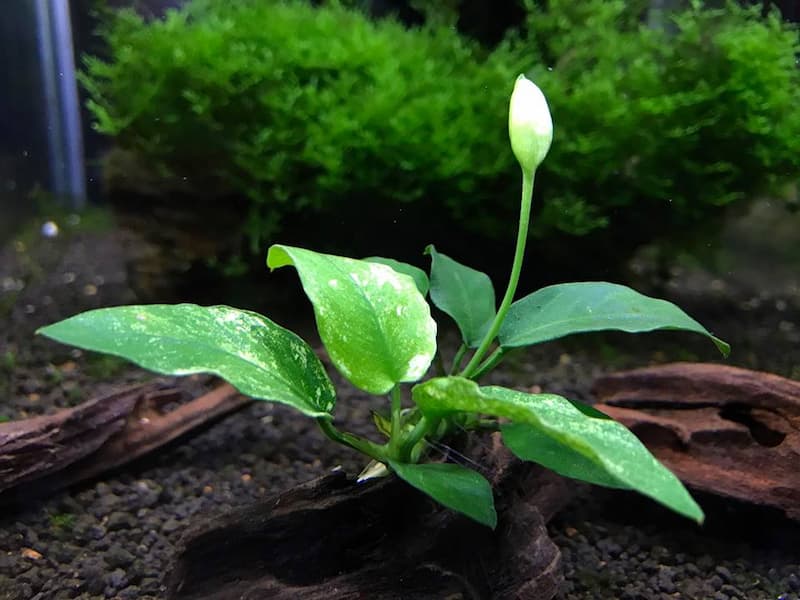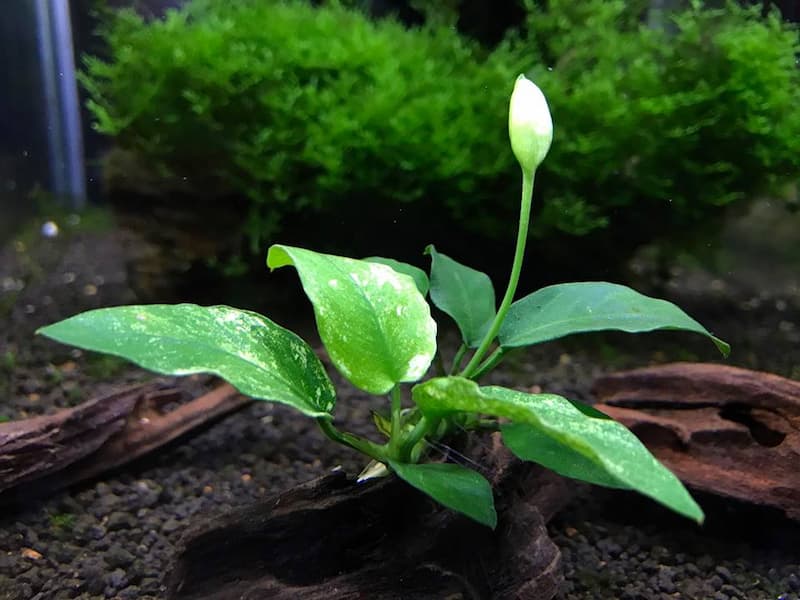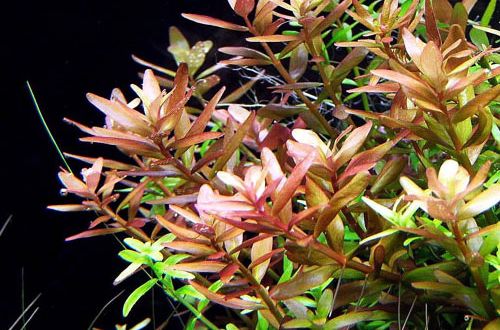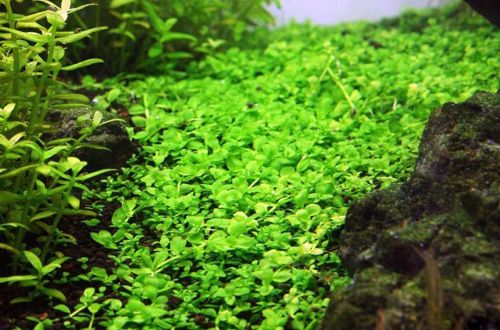
Anubias pinto
Anubias pinto, scientific name Anubias barteri var. Nana grade “Pinto”. The plant is an ornamental variety of Anubias nana, which, in the course of long-term selection, has acquired a variegated white-green leaf pattern. Otherwise, this variety is identical to its predecessor.
The plant grows to a small bush about 8 cm high. Leaflets are ovate, with a pointed tip. The characteristic light pattern is caused by the absence of green pigments, chlorophyll, in certain areas of the leaf. The patterns are unique to each leaf and each plant, and no two are alike.
Compared to other Anubias species, Anubias pinto grows slower. More intense light is recommended to keep the plant healthy and maintain the white-green leaf pattern. When rooting in the ground, it is very important not to bury the rhizome during planting, as this can lead to rotting of the rhizome and death of the plant.

Anubias grow best attached to hard surfaces such as driftwood or rocks. This is due to the fact that in the wild Anubias grow on such surfaces, and not on the ground. For initial fixing, it is recommended to use nylon threads (fishing line), when the roots begin to hold the plant, the fishing line can be cut.

The optimal placement in the aquarium is in the foreground or middle ground with reasonably good lighting.
Since Anubias pinto grows very slowly and needs moderate light, dotted algae (Xenococus) may appear on its leaves. This is a perennial problem for all Anubias. Such algae are not critical and you can live off them, you can learn more about them in a separate article.
Basic information:
- Difficulty of growing – simple
- Growth rates are low
- Temperature — 12-30°С
- Value pH — 6.0–8.0
- Water hardness – 1-20GH
- Light level – moderate or high
- Aquarium Use – Foreground or Middle Ground
- Suitability for a small aquarium – yes
- spawning plant – no
- Able to grow on snags, stones – yes
- Able to grow among herbivorous fish – yes
- Suitable for paludariums – yes





